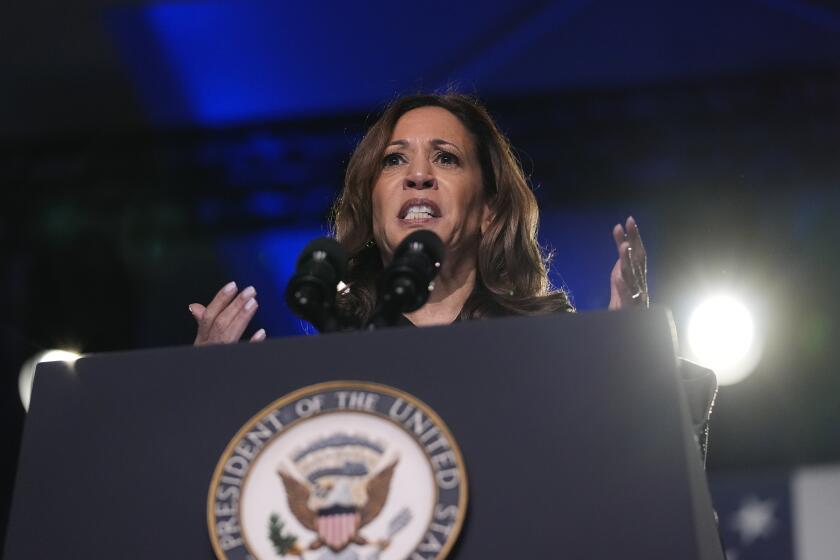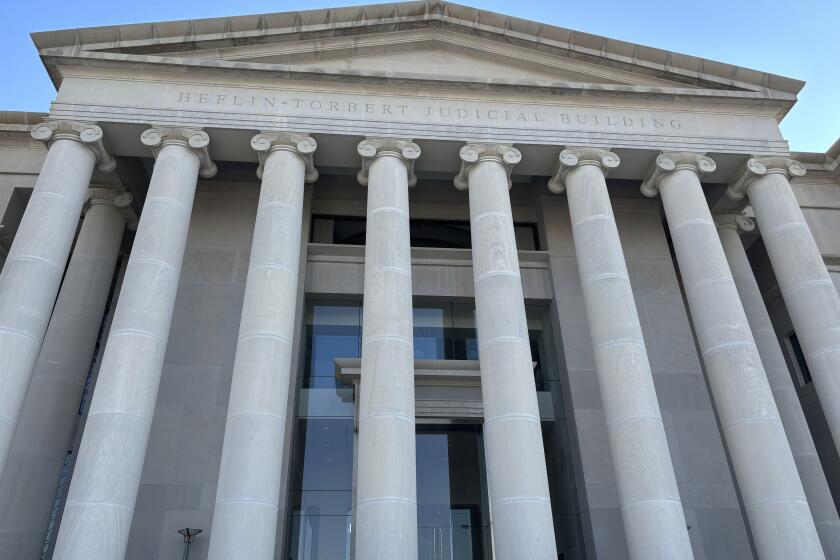Governor’s call for giving colleges priority over prisons faces hard political tests
At the center of Gov. Arnold Schwarzenegger’s State of the State speech Wednesday was a proposal that outside of Sacramento might seem like common sense: Mandate that the state invest more dollars each year in its public universities than in locking people up in prison.
But to many inside the Capitol, that idea appears all but unattainable.
The plan -- and the reaction to it -- highlights the disconnect between the priorities of voters and the reality of the state’s shattered finances and a policymaking process that often seems byzantine.
“In concept, it absolutely makes sense to everyone,” said Thad Kousser, visiting professor of political science at Stanford University. But “when you look at the trade-offs that the state might face to get there, it gets a lot harder.”
The proposal for a constitutional change that would require more spending on higher education than prisons was the key headline as Schwarzenegger delivered his final State of the State speech, in which he also asked legislators to approve a jobs creation program and urged them to join him in pushing for increased funding from Washington.
The governor’s plan aims to bring back the days when the state funneled more money into University of California and California State University classrooms than into its prisons. It has been at least five years since that has been the case. It comes at a time when tuitions are soaring and course offerings are being cut.
The state’s public universities, long considered an economic engine and a source of pride for California, have proved to be an easier target for budget cuts than other major programs, which are protected by politically powerful unions, deep pocketed corporate interests or federal laws limiting the state’s ability to cut.
“What does it say about a state that focuses more on prison uniforms than caps and gowns?” Schwarzenegger said. “The priorities have become out of whack. . . . Thirty years ago, 10% of the general fund went to higher education and 3% went to prisons. Today, almost 11% goes to prisons and only 7.5% goes to higher education.”
The governor called for a constitutional amendment that would prohibit corrections spending from outstripping funds for higher education by 2014-2015. The plan would require approval from lawmakers and voters.
University leaders said they were delighted that the governor was championing the proposed amendment, which UC President Mark G. Yudof called “a visionary way to address the issues.”
Charles B. Reed, chancellor of the 23-campus Cal State system, acknowledged that gaining approval for the measure would require “heavy lifting,” but said he thought it ultimately could win favor with the Legislature and voters.
“It’s a step to begin to change the culture of California back to investing in California’s future rather than just paying expenses for California’s failures,” Reed said.
But lawmakers have been unable to trim the corrections budget for years. Voters and politicians alike have approved years of stiffer sentences and stricter rules for parolees -- driving up the prison population. The result has been a prison network bursting at the seams, with federal judges taking control of prisoners’ healthcare and ordering the state to either release tens of thousands of inmates or boost prison spending by billions. Lawmakers so far have chosen to keep spending.
Although some legislators applauded the governor’s goal, they were immediately skeptical of his plan for reaching it.
It calls for cutting spending through privatization -- either having private companies run prisons or hiring private firms to supply state-run facilities with guards, doctors, teachers and other employees. Most current prison workers are part of a powerful union, the California Correctional Peace Officers Assn.
“I don’t think privatizing prisons is the answer,” said Assembly Speaker Karen Bass (D-Los Angeles). “I think we need to look at why California incarcerates more people than any other state. We need to look at ways to reduce recidivism and we certainly need to look at sentencing reform.”
Republicans tend to support privatization, but they have other concerns. Many of the state’s financial problems have been exacerbated by conflicting constitutional mandates already on the books that dictate increased spending for various programs each year. The new proposal would be another of those. And GOP lawmakers are not eager to impose the prison cuts that would be required to free up money for universities.
“The most essential of government functions is public safety,” said Sen. Tony Strickland (R-Thousand Oaks), “and we have to make sure that’s our top priority.”
In the current budget, UC, Cal State and the state’s Cal Grant financial aid program combined to receive about $6 billion, not including revenues from student fees. The Department of Corrections and Rehabilitation received $8.12 billion, according to the nonpartisan Legislative Analyst’s Office. Under the governor’s plan, spending on UC, Cal State and Cal Grants would have to account for at least 10% of the state’s general fund by 2014-15; prisons could receive no more than 7%. The guarantee could be suspended by a two-thirds vote of the Legislature.
Changing that ratio would require the type of deep cuts in prison spending that Sacramento has long balked at making. Federal courts also would have to give their blessing. Short of deep cuts in the prison budget, the only other way to meet the mandate would be to find billions of new dollars for universities elsewhere in the budget at a time when the state is facing enormous deficits.
In the 1970s, the share of the state budget set aside for UC, Cal State and state financial aid was about 13%, nearly four times as large as the percentage for corrections, according to the California Postsecondary Education Commission. Funding for the two sectors drew close in the early 1990s and prisons then pulled ahead consistently starting in 2004-05, the commission reported.
Steve Boilard, director of higher education issues in the Legislative Analyst’s Office, questioned the proposed link between higher education and prisons, even if it might appeal to voters.
“It’s apples and oranges,” he said of universities and prisons. “Why should state spending on higher education be determined on how much we save on prison reform?”
Yudof, president of the 10-campus UC system, said he did not know whether it was politically wise to link university and prison funding. But he hailed the governor’s plan as “a very useful opening salvo” to restore higher education funding.
“I don’t have any particular argument with corrections or the need to lock up bad guys,” Yudof said. “But having the best prison system in the world is not going to create jobs the way having the best university system will.”
Times staff writer Patrick McGreevy contributed to this report.
More to Read
Get the L.A. Times Politics newsletter
Deeply reported insights into legislation, politics and policy from Sacramento, Washington and beyond. In your inbox three times per week.
You may occasionally receive promotional content from the Los Angeles Times.











